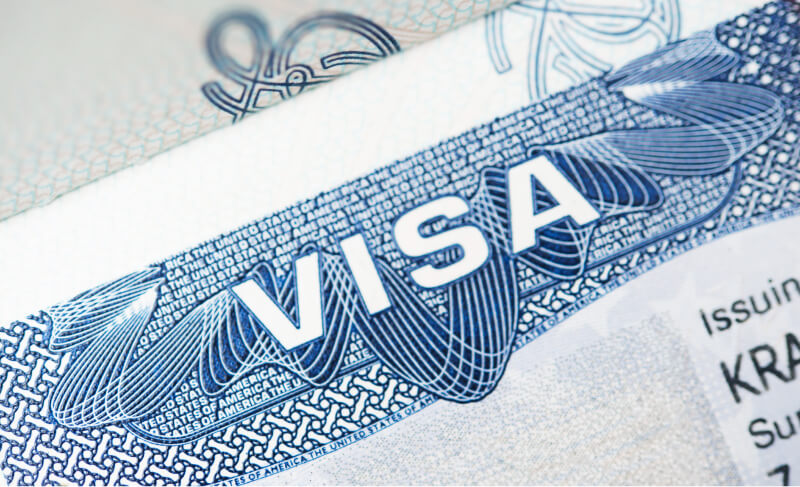Receiving a visa rejection can be a disheartening moment, but it doesn’t mean your dream of studying abroad is over. Understanding what happens if your visa gets rejected and knowing how to respond proactively can turn this setback into a learning experience.
This guide will walk you through common reasons for visa rejections, your immediate next steps, and how to increase your chances of approval in the future.
Common Reasons for Visa Rejections
Visa applications can be denied for a variety of reasons. Understanding these will help you avoid similar pitfalls in the future.
1. Incomplete or Incorrect Documentation
Missing, outdated, or incorrect paperwork is one of the most common reasons for rejections. Ensure all forms are complete and double-check for accuracy.
2. Insufficient Financial Proof
Visa officers need to see that you can financially support yourself during your studies. If your bank statements or financial guarantees fall short, your application could be denied.
3. Unclear Intentions for Travel
If your application doesn’t clearly demonstrate your intent to study and return home after your program, it might raise red flags.
4. Failure to Meet Visa Requirements
Every country has specific visa requirements, such as language proficiency or academic qualifications. Missing these can lead to rejection.
External Link: Detailed Visa Requirements by Country
What to Do Immediately After Visa Rejection
If your visa application is rejected, don’t panic. Follow these steps to understand and address the situation.
1. Review the Rejection Letter
Your rejection letter will outline the reasons for denial. Carefully review it to identify where your application fell short.
2. Contact the Embassy or Consulate
For clarification, reach out to the embassy or consulate that processed your application. While they may not always provide detailed answers, they can offer general guidance.
3. Gather Feedback
Some countries allow you to request feedback or appeal the decision. Check if this option is available for your case.
4. Reassess Your Documents
Compare your application against the visa requirements. Look for missing or weak elements, such as incomplete financial proof or insufficient supporting documents.
Next Steps to Take After Visa Rejection
1. Determine if You Can Reapply
In many cases, you can reapply for the same visa after addressing the reasons for rejection.
- Strengthen weak areas of your application.
- Ensure all documents are updated and accurate.
- Provide additional supporting evidence if necessary.
2. Consider Alternative Study Destinations
If reapplying isn’t an option or if you face time constraints, consider other countries with similar programs and more flexible visa policies.
3. Seek Professional Assistance
Visa consultants or your university’s international office can provide expert guidance. They may help you compile a stronger application or identify alternative pathways.
External Link: Find a Trusted Visa Consultant
How to Avoid Visa Rejection in the Future
1. Prepare Thoroughly
Start your application early and ensure all documents are complete. Create a checklist to stay organized.
2. Demonstrate Financial Stability
Provide bank statements, scholarship letters, or financial guarantees that meet or exceed the required amount.
3. Highlight Your Intent to Return Home
Include ties to your home country, such as property ownership, family commitments, or a job offer upon completing your studies.
4. Practice for Visa Interviews
If your application requires an interview, prepare answers that confidently address your study plans, financial situation, and future goals.
FAQs About Visa Rejection
Q: Can I appeal my visa rejection?
A: Some countries allow appeals, while others require you to submit a new application. Check the specific policies for your host country.
Q: Will a visa rejection affect future applications?
A: A previous rejection may impact future applications, especially if the same mistakes are repeated. Address all issues thoroughly before reapplying.
Q: How long should I wait before reapplying?
A: This depends on the specific country and visa type. Some allow immediate reapplications, while others may have a mandatory waiting period.
Success Stories: Turning Rejection into Approval
Many students have successfully overcome visa rejections by learning from their mistakes. For example:
- Sarah’s Experience: After her student visa was rejected due to insufficient financial proof, Sarah secured additional funding through a scholarship and was approved on her second attempt.
- Ahmed’s Journey: Ahmed’s unclear study plan led to a rejection, but with guidance from his university’s international office, he strengthened his application and succeeded.
Final Thoughts
A visa rejection can feel like a major obstacle, but it doesn’t have to derail your study abroad plans. By understanding what happens if your visa gets rejected and taking proactive steps, you can navigate this challenge with confidence.
Remember, every setback is an opportunity to improve. With careful preparation and persistence, your dream of studying abroad is still within reach.





